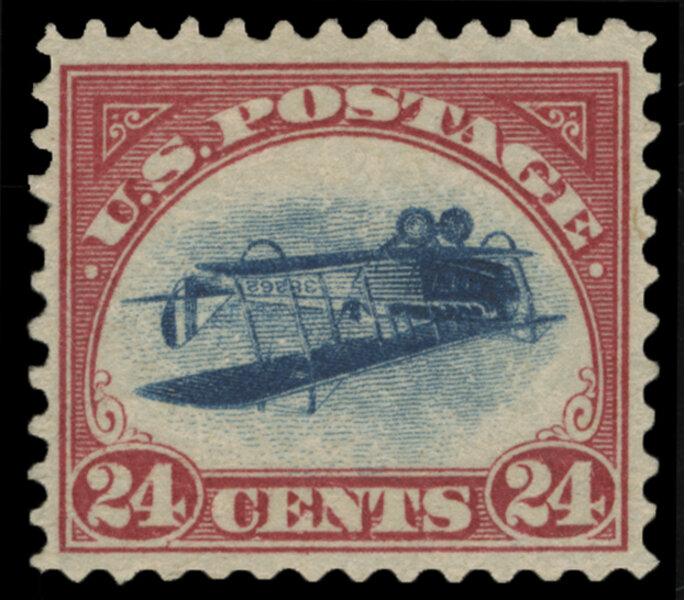Rare 'inverted Jenny' stamp turns up, six decades after being stolen
Loading...
More than six decades after four rare “inverted Jenny” stamps were stolen in a notorious heist, one of the stamps has resurfaced.
"This is one of the most exciting events in my 38 year career in the stamp auction business," George Eveleth, Head of the Philatelic Department at Spink, an international auctioneer of stamps, said in a press release Friday.
In 1918, stamp collector William Robey bought 100 first airmail stamps in Washington DC for $24, only to later find that the Curtiss JN-4H biplanes depicted on his sheet of stamps was upside down. Robey’s 100 stamps were the only ones with the mistake to survive and he sold the stamps to various collectors.
New York heiress Ethel McCoy purchased a block of four “inverted Jenny” stamps in 1936 for $16,000, which, according to the US inflation calculator, would be equivalent to more than $274,000 today. And in 1955, McCoy lent her four Jenny stamps (which were from positions 65-66 and 75-76 from Robey’s original sheet) to the American Philatelic Society to display at a convention in Norfolk, Virginia. Unfortunately, McCoy’s four stamps – which Spink refers to as the heiress's "most prized possession" – were stolen out of their exhibition frame. The thief remains unknown today.
“It’s one of the most notorious crimes in philatelic history, and there’s a piece of the puzzle now that’s in place,” Scott English, administrator of the American Philatelic Research Library, tells CBS News.
After the theft, each stamp was “altered to disguise its appearance,” and then resold individually. Two of the four stamps were recovered in the 1970s and 1980s, but the fourth still remains missing. English hopes this recent discovery could lead to new clues about the theft’s identity and the fourth stamp’s location.
“We’re going to remain optimistic,” he tells CBS. “Because think about it: Here we are, 61 years later, and a stamp has appeared.” According to the Associated Press, the third recovered stamp was discovered on April 1 when a man in his 20s living in the United Kingdom “inherited it from his grandfather,” and knowing little about the stamp, tried to sell it.
And while the third stamp’s owner may not have recognized the stamp’s identity, he is a minority. Officials in the philatelic world say part of the inverted Jenny’s high value is attributed to its international notoriety.
“In the philatelic world, the ‘inverted Jenny’ stamps are some of the most famous and highly coveted, but their renown has also seeped into popular culture,” explains NPR. “For example, in one episode of The Simpsons, Homer finds a sheet of the stamps – along with a Stradivarius violin and an original copy of the Declaration of Independence – but he doesn’t recognize the value of his find and dismisses them.”
As one of the most famous misprints in US stamp history, an inverted Jenny stamp recently sold for close to $1 million.








